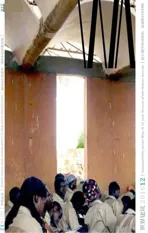发现音乐
2016-12-21
发现音乐
Finding the Music
在圣保罗的贫民窟,年轻人感到前景黯淡,居民们几乎没有一点公共空间。市政当局抓住机会,在一片空工地上建了一所大型音乐学校。贫民窟里的贝多芬?事实证明,这种组合已经在无数其他地方取得空前成功。
“怪物”是一个经常被误用的名词,但用它来形容杂乱无序拓展的圣保罗却是再合适不过了。在巴西最大的都市圈,大约生活着2000万人,使圣保罗成为南半球人口最多的城市。在短短50年内,该市的人口已翻了两番。大部分持续涌入大都市的人都必须找个地方搭建自己的安身之所。其结果是,该市目前大约已有600个棚屋区,即所谓的贫民窟——基础设施远远不够的违建定居点。蔓延之势继续有增无减,很快,距市中心25km的半径范围内就没有一片绿地了。鉴于圣保罗面临的大量环境问题,这种境况尤其棘手:这个城市是拉美最大的工业都市,而且直到现在,还没有对生态问题予以足够重视。两条主要的河流,铁特河和皮涅罗斯河已经毫无生机,空气污染水平高得惊人——这个城市所在的盆地空气对流极少,土壤封盖也加剧了雨水径流,造成洪灾频发。
天堂里的泥石流
帕赖索波利斯是全市600个贫民窟中的一个。这个名字来源于葡萄牙语单词“paraíso”,意思是“天堂”。这真是一个极具讽刺意味的名字,因为这个位于该市南部的贫民窟根本与天堂毫不沾边。50年前,这个地区主要发展农业。由于到处都是陡坡和大大小小的水道,建造街道非常困难,所以几乎连一条街也没有。又由于附近莫伦比地区的开发,大量建筑工人在帕赖索波利斯落户。如今,这个贫民窟大约有17,000户、6万~8万个居民。帕赖索波利斯的人口密度与曼哈顿接近,而大部分建筑却只有2~3层。与此同时,这个居住点已经成了一个庞杂的房屋之海。虽然贫民窟内很多区域的建筑工地被评为高风险区,可是几乎每平方米可用地面上都在建房。例如,在被居民称为“石窟”(Grotão)的区域,新来者竟然把房屋建在陡峭的斜坡上。2008年,这种风险已经显而易见:暴雨造成泥石流,所有建筑都被裹挟到山下。当局很清楚,如果再不采取对策,刚刚空出来的地方很快就会重新盖满房子。换言之,必须为“石窟”制定出新方案。伊丽莎贝塔·弗兰卡有一个建议:圣保罗人居秘书——SEHAB希望在“石窟”建一所音乐学校。
加拉加斯的奇迹
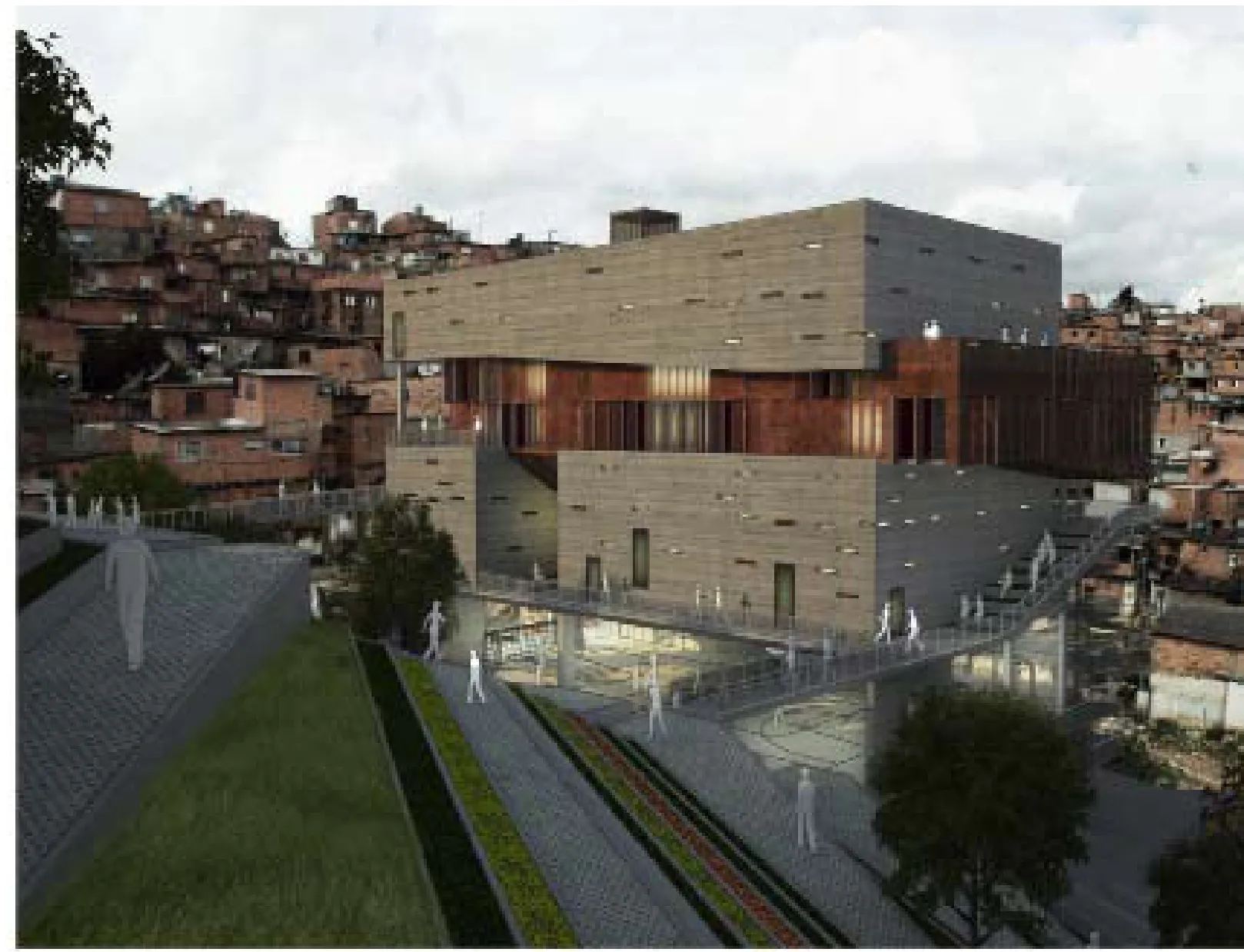
2 透视/Perspective
在贫民窟建音乐学校——为最不关注古典音乐的人带去巴赫和贝多芬?外人一开始可能会觉得这个想法荒诞。但是,众所周知,在拉丁美洲古典音乐在贫民窟有着巨大的潜力。这种发展可以追溯到委内瑞拉音乐家、经济学家和社会政治家何塞·安东尼奥·阿布雷乌。大约40年前,他就在寻找帮助加拉加斯贫民窟内的社会弱势儿童和青少年远离暴力和毒品的方法。他制定的愿景可以概括为:要乐器,不要武器。音乐课可以教育男孩女孩们,并提供心理和社会稳定。委内瑞拉国立青少年管弦乐团自1975年在一个地下停车库开始,目前已发展成为加拉加斯的奇迹。阿布雷乌的非传统理念已经成为一个全球性运动的范本,现在包括400个管弦乐团、342个合唱团、230所音乐学校和4000名音乐教师。虽然始于委内瑞拉(当时在该国,委内瑞拉国立青少年管弦乐团现在直接由前总统查韦斯负责),它现在组织的计划已遍及美洲,从加拿大到阿根廷。来自棚户区的管弦乐团成为出口热门:他们出现在世界各地的无数节日中,并与许多欧美专业乐团合作。劳迪奥·阿巴多、祖宾·梅塔和西蒙·拉特尔等指挥家支持该项目。阿布雷乌以前的学生和门生古斯塔沃·杜达梅尔已成为这个运动的象征。如今,这位在自己的祖国完成该计划的委内瑞拉人,已成为洛杉矶爱乐乐团的首席指挥。
把想法交给专家
目前受教于委内瑞拉国立青少年管弦乐团的儿童和年轻人大约有35万名。参与人数与日俱增,创始人阿布雷乌希望到2015年会增加到100万。青少年管弦乐团为音乐学校提供了乐器,并且每周6天为两岁以上的儿童免费授课,以便让他们待在安全的音乐学校里,远离暴力。此外,这些音乐教师还与市政当局合作,为学生提供衣服和食品。鉴于石窟区目前缺乏文化活动,而且,委内瑞拉国立青少年管弦乐团的成功已得到证明,利用石窟区居民点实施社会音乐中心(Centro de Acçao Social por la Música, CASM)的计划似乎顺理成章。但是,圣保罗城市管理局的发起人深知,在贫民窟中央建立音乐学校绝非易事。他们向跨学科的设计公司城市智库 (U-TT) 寻求帮助,该公司扎根于加拉加斯,由联合创始人和联合负责人阿尔弗雷多·布林伯格和休伯特·克伦普纳领导。城市智库致力于各种与当代建筑和城市化有关的课题的高级研究和设计,专门从事世界各地非正规居民点社区项目,并使社区受益。
背包徒步而非全包度假旅行
阿尔弗雷多·布林伯格于1961年出生在纽约,休伯特·克伦普纳于1965年出生在奥地利的萨尔茨堡。二人都在纽约哥伦比亚大学攻读建筑学,他们在读研究生时相识,并开始合作。布林伯格和克伦普纳一起在哥伦比亚大学开办可持续城市生活示
The Paraisópolis favela in São Paulo offers few prospects for young people – and little public space for all inhabitants. The city authorities grasped the opportunity to build a large music school on an empty site. Beethoven in the favela? This combination has already proved extremely successful in countless other places.
"Monster" is an often misused term, but appropriate for sprawling São Paulo. Some 20 million people live in Brazil's largest metropolitan region, making São Paulo the most populous city in the southern hemisphere. Its population has quintupled in just 50 years. Most of the people that continue to stream into the conurbation must erect their own shelter somewhere. As a result, the city now has about 600 slums, so-called favelas – illegally built settlements with totally inadequate infrastructure. Expansion goes on unabated, and very soon there will be no green space left within a radius of 25 kilometers from the city center. Tis is particularly problematic in the light of the massive environmental issues facing São Paulo: the city is the largest industrial megalopolis in Latin America, and up to now ecological concerns have not been taken seriously. The two main rivers, Rio Tietê and Rio Pinheiros, are biologically dead; airpollution levels are alarmingly high – the city lies in a basin with far too little air exchange – and soil sealing exacerbates rainwater run-off, resulting in frequent heavy flooding.
Mudslides in paradise
Paraisópolis is one of the city's 600 slums. The name comes from the Portuguese word paraíso, meaning paradise. An ironic name, for this favela in the south of the city is anything but a paradise. Fifty years ago the area was largely agricultural. There are hardly any streets because the topography with its many steep slopes and smaller and larger watercourses makes it difficult to build them. Owing to the development of the Morumbi district nearby, a significant number of construction workers have settled in Paraisópolis. Today, the favela has between 60,000 and 80,000 inhabitants living in 17,000 households. The population density is similar to that of Manhattan, although most buildings in Paraisópolis are only two or three storeys. In the meantime, the settlement has become a gigantic sea of houses. Every available square meter appears to be built on, although building sites in many zones of the favela are rated as high risk zones. For example, in the area that the residents call Grotão, grotto. Here new arrivals built houses on a steep slope. In 2008 it became obvious just how risky that was: heavy rains caused a mudslide that carried all the buildings down the hill. The authorities knew that if they did not take countermeasures the now empty space would be covered with new buildings in no time at all. In other范实验室(贫民窟实验室),并自2010年在联合担任瑞士苏黎世联邦理工学院的建筑和城市设计主席。是什么让这两位对贫民窟倍加关注,并且几乎为之付出全部职业生涯?“如果你像我一样,出身于非常结构化的社会,当你第一次在非正规城市居住区工作的时候,你会经历某种文化冲击”, 休伯特·克伦普纳说。“但是,我觉得这样的工作简直太引人入胜了。就像是在一次心血来潮的背包旅行和预定一次全包海滩度假旅行之间进行选择——很明显,它提供更多的冒险刺激!”除此之外,非正规城市居住区为创建变革提供了最佳机会:“全世界最需要采取行动的是南部的城市贫民窟改造——也是最有潜力的,因为受这些问题困扰的国家正在经历政治巨变,走向真正的民主。”
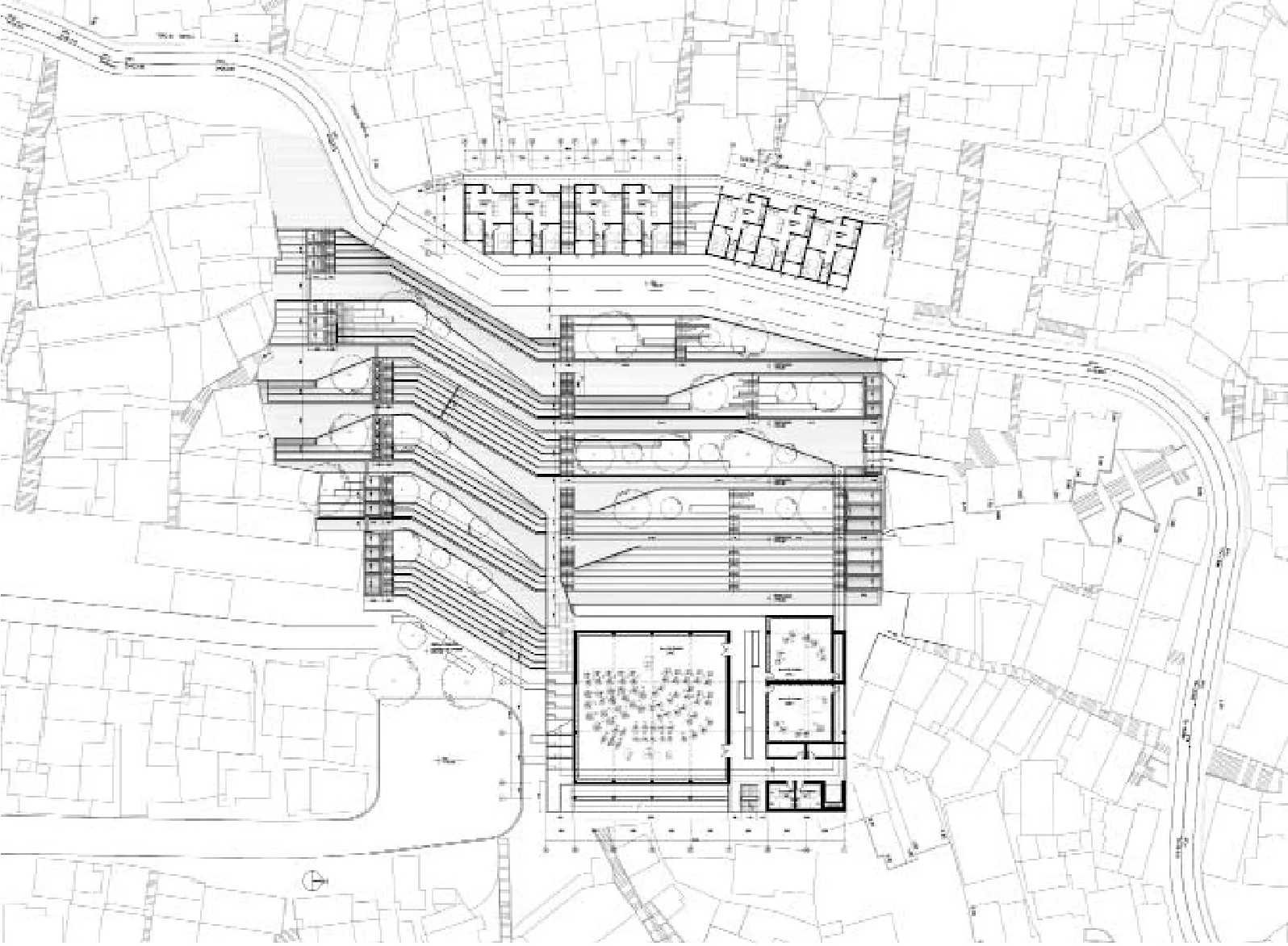
3 平面/Plan

4 景观和建筑系统/Landscape and building systems

5 景观/Landscape
向贫民窟学习
这两位专家认为,城市非正规居住区可持续性建设的意义与中央商务区有很大不同。“城市非正规居住区产生垃圾之少、建筑密度之大已经与我们千辛万苦努力在发达地区实现的目标相当,” 阿尔弗雷多·布林伯格说。他和休伯特·克伦普纳相信,城市非正规居住区可以作为正规居住区的榜样。阿尔弗雷多·布林伯格说:“如果我们成功地保留贫民窟的好的方面,同时提供其生活质量,我们就会实现一种让人们都希望生活在这些地区的状态。”这将是一个模式转变;到现在为止,其宗旨一直是让非正规区域适应整个城市。然而克伦普纳评论说:“如果以我们习惯性的傲慢,就无法解决南部非正规居住点的问题。那里售出的系统往往恰好是北部和西部许多问题的根源。这种方法会阻碍发展进程中的机会。”这不仅是一个城市的翻修问题,而且也是设计新的可能性,以打开干预和行动的新局面。克伦普纳以公共交通为例:“交通运输不一定非和目前一样在街道上进行,在空中运行也是可以的;因此,我们为加拉加斯一个非正规区域开发了一个索道。”他所说的“空中缆车”项目是城市智库最负盛名的成果,“空中缆车”已经在圣奥古斯丁、加拉加斯等区域运营,对那里的社区交通产生了显著的积极影响。
以高雅文化取代垃圾
城市智库在拉丁美洲的许多项目是其规划CASM的最佳资质。城市智库与当局、外请专家及石窟区本地居民合作,为帕赖索波利斯开发了“音乐工厂”。该项目赢得了2012年全球豪瑞奖银奖和2011年拉丁美洲豪瑞奖金奖,它的占地面积约为6000m2,分成两个部分:一个陡峭的山坡和山坡脚下的一片平地。基址上还到处散落着当初被泥石流摧毁的建筑物的材料,土壤为沙质,遍布泥坑;把它转变成合适的建筑工地将是巨大挑战。那块平地上目前有几间房子和一个运动场,但经常遭受雨水冲刷。由于这些建筑及其居住者处于高风险区,他们必须为项目让歩,以便稳固地面,防止发生灾难。计划在上部区域为居民建安置房。新房的低楼层用于商业经营,应当有助于使街道更繁荣、更安全。这座包括音乐学校和文化设施在内的25m高4层综合体CASM将建在山坡底部,可以通过贫民区内的一条新街道到达,并通过一个大斜坡、一个桥梁系统和梯田景观与周围的景观相连。开放式设计和便利的到达是该项目成功的关键:帕赖索波利斯的居民必须将CASM当作他们自己的建筑,将其融入社区生活,并承担其使用和维护责任。
各楼层均有创新
CASM的一楼将以新的开放式体育设施为特征,乐团也可以将其用作室内表演场地。据布林伯格称,具有多种活动项目是保证社区参与的关键:“我们需要体育设施,以便让年龄较大的孩子有理由带他们的弟弟妹妹来上音乐课。不论是音乐还是体育,CASM的社区中心功能都是最重要的。”开放式底层上方的两层用作音乐学校,有大、小教室、练声室和整个乐队的排练区。顶层是为重大活动和表演设计的:在这里,管弦乐队和合唱团可以在200名观众面前表演。CASM的整个室内空间规划是与何塞·安东尼奥·阿布雷乌合作设计的;他知道委内瑞拉国立青少年管弦乐团的运转需要什么。CASM的设计初衷是,每天可以有1000名儿童、青年和成年人进出。在声学方面,布林伯格和克伦普纳咨询了世界上最优秀的音响工程师之一,慕尼黑的卡尔·海因茨·穆勒。门面设计也采用了很多专有技术。由建筑师开发的系统以创新混凝土构件为基础,可用于各种目的,包括适应一年中不同季节的气候条件。这些适应性所需的构件可以在现场制造,从而为贫民区内的人们提供工作机会。
景观与建筑融为一体
智能门面只是CASM示范性可持续性概念的一个组成部分。“景观和建筑融为一体,可以有效应对一年四季的不同情况。”设计者指出。由于温暖的北风被山挡住,南风从下面徐徐吹进大楼。排气通过烟囱排出,烟囱的上部受阳光照射,造成压差,产生必要的吸力。山坡修成梯田状,以稳固地形,防止暴雨后产生泥石流。由此产生的景观形成一个天然的舞台,社区可以用来举行露天音乐会,还可用于一系列其他用途。巧妙的设计和景观美化消除了侵蚀;小湿地被动地过滤雨水,可用于灰水应用。小山也有助于为CASM制冷:冷水经管道从小山输送至每个楼层的地板内冷却系统,水在此吸收热量,然后流回山上。到了晚上,水再次冷却。CASM所需的全部电力均由楼顶800m2使用混合收集器的光伏系统提供。
完美适合——不仅在这里
和世界各地城市内的许多地区一样,帕赖索波利斯也缺乏安全的公共空间和足够的社会基础设施。整个CASM综合体是作为社区中心设计的,希望为有效的社区参与提供公共空间。虽然该项目是专为石窟区提出的具体需求和挑战量身定制的,休伯特·克伦普纳断言:“其设计和许多细节稍加调整即可适应其他要求。”石窟区的情况在世界各地被重复了无数次,城市智库在帕赖索波利斯的干预措施可以作为许多类似项目的原型。而在实现像CASM这样的项目过程中,还有许多重要因素——包括市政当局的支持、创新专家团队和社区批准——以及以异常简单的方法应对艰难挑战的勇气。words, a new approach had to be developed for Grotão. Elisabeta França had a suggestion: the director of the Secretaria Municipal de Habita.ao de São Paulo (São Paulo Secretary of Habitat – SEHAB) wanted to build a music school in Grotão.
The wonder of Caracas
A music school in a favela – Bach and Beethoven for people for whom the lack of classical music is probably their least concern? Outsiders may find the idea bizarre at first. In Latin America, however, it is common wisdom that classical music has enormous potential in slums. This development goes back to José Antonia Abreu, a Venezuelan musician, economist, and social politician. Almost 40 years ago he looked for a way to help socially disadvantaged children and youth in the slums of Caracas to escape violence and drugs. The vision that he developed can be summed up as: instruments instead of guns. Musical instruction would educate boys and girls and provide psychological and social stability. El Sistema started in an underground parking garage in 1975 and has developed into the Wonder of Caracas. His unconventional idea has become the model for a global movement and now includes 400 orchestras, 342 choirs, 230 music schools, and 4,000 music teachers. Although it started in Venezuela, where El Sistema is now directly accountable to President Hugo Chávez, it now has programs throughout the Americas, from Canada to Argentina. Te orchestras from the shanty towns have become an export hit: they appear at countless festivals all over the world and have cooperation agreements with many professional orchestras in Europe and the USA. Conductors such as Claudio Abbado, Zubin Metha, and Simon Rattle support the project. Gustavo Dudamel, Abreu's former student and protégé, has be-come the symbol of the movement. Today, the Venezuelan, who completed the program in his home country, is the principal conductor of the Los Angeles Philharmonic Orchestra.
Taking the idea to the experts
About 350,000 children and young people currently receive instruction under El Sistema. The number grows by the day; founder Abreu hopes it will reach one million participants by 2015. El Sistema provides musical instruments and music tuition free of charge six days a week for children from the age of two in music schools where they find a safe and non-violent environment. Moreover, the music teachers work together with the city authorities to provide clothes and food for the students. The plan to use the site in Grotão for the Centro de Acçao Social por la Música (CASM) seems natural in light of Grotão's current lack of cultural programming, and El Sistema's proven success. However, the initiators in the São Paulo city administration knew that it would be no easy task to build a music school in the middle of a favela. Looking for help, they turned to Urban-Think Tank (U-TT), an interdisciplinary design firm with roots in Caracas, led by co-founders and co-principals Alfredo Brillembourg and Hubert Klumpner. Urban-Think Tank is dedicated to highlevel research and design on a variety of subjects concerned with contemporary architecture and urbanism. Tey specialize in projects that engage and benefit communities in informal settlements around the world.
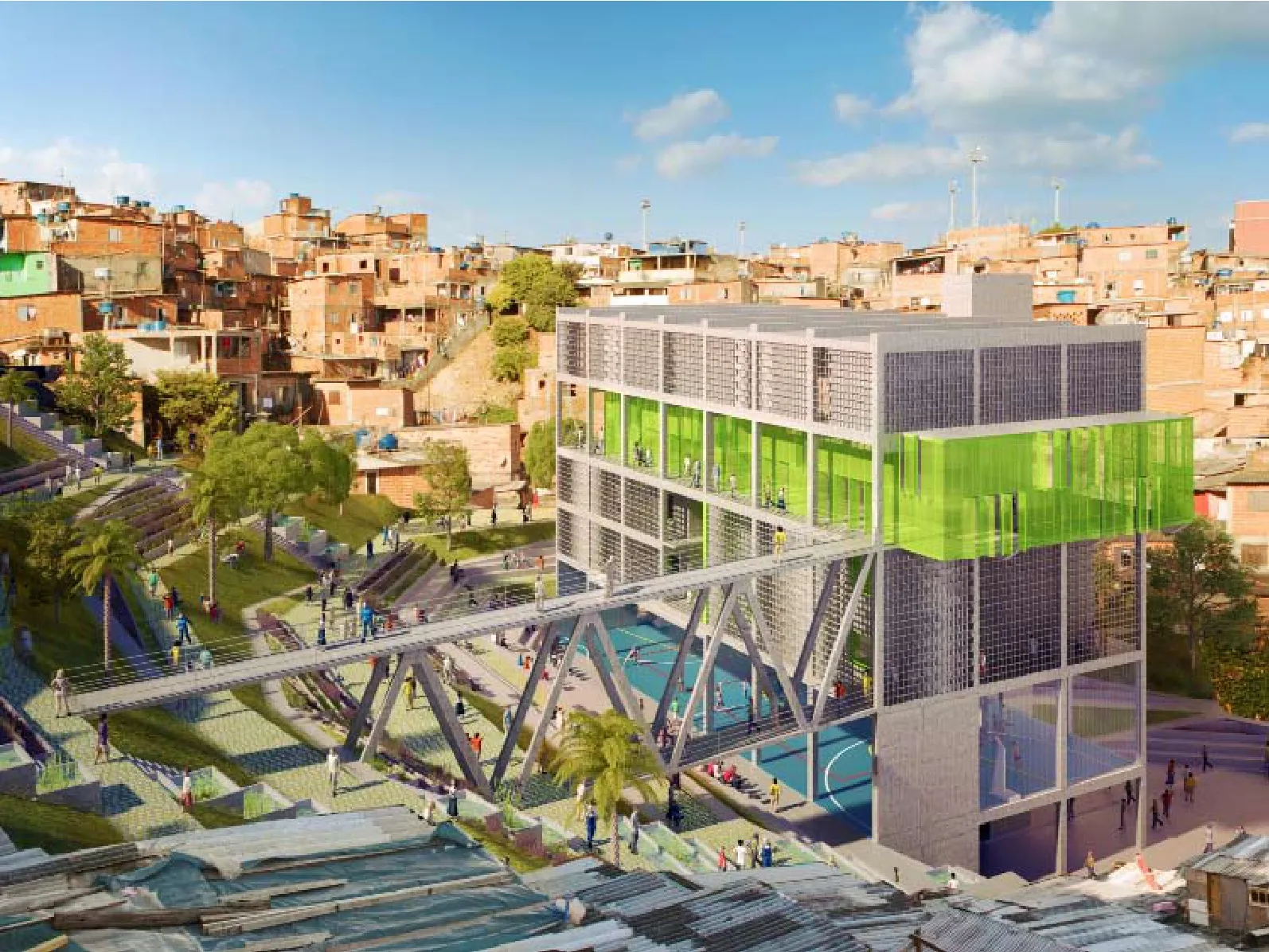
6 景观和音乐学院发展成为一体/Landscape and music school developed as one building
Backpacking instead of an all-inclusive vacation
Alfredo Brillembourg was born in New York in 1961, and Hubert Klumpner was born in Salzburg, Austria, in 1965. Both studied architecture at Columbia University in New York City, where they met as graduate students and began their collaboration. Together, Brillem-bourg and Klumpner launched the Sustainable Living Urban Model Laboratory (SLUM Lab) at Columbia University, and since 2010 share the chair of Architecture and Urban Design at the Swiss Federal Institute of Technology (ETH Zurich). What is it about slums that interests the two enough to devote almost their entire professional lives to them? "If, like me, you come from a very structured society, you experience some sort of culture shock when you first work in informal urban settlements," Hubert Klumpner remarks. "But I find this work simply engrossing. It is like the choice between a spontaneous backpacking trip and booking an allinclusive beach vacation – it's clear which offers more adventure!" In addition, informal urban settlements provide the best opportunities for creating change: "The greatest need for action worldwide is in urban reconstruction in slum zones in the South – and also the greatest potential, because the states in question are undergoing a political sea change toward genuine democracy."
Learning from slums
Te two experts believe that sustainable building means something very different in informal urban settlements than in central business districts. "Informal urban settlements already produce as little waste and are as densely built as we are painstakingly trying to achieve in developed districts," Alfredo Brillembourg states. He and Hubert Klumpner are convinced that informal urban settlements can serve as a model for formal ones. Alfredo Brillembourg: "If we succeed in retaining what is good about slums and simultaneously improve the quality of life, we will achieve a situation that will make people want to live in these districts." This would be a paradigm shift; up to now the aim has always been to adapt informal zones to the formal city. Yet Klumpner remarks: "We cannot approach the problems of informal settlements in the South with our customary arrogance. Often the systems sold there are precisely those that are the source of so many problems in the North and West. This approach blocks the opportunity of progress in development." It is not just a question of urban repair,
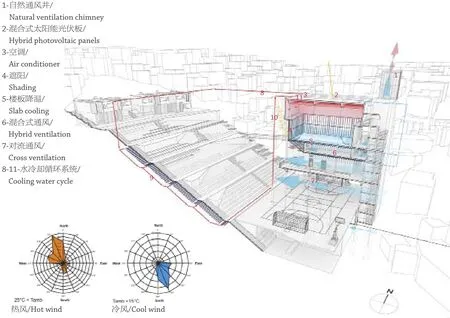
7 建筑系统:建筑与景观配合实现的综合性主动及被动式系统/Building systems: building and landscape work together to create a comprehensive combination of active and passive systems
9 but of designing new possibilities to open up new levels of intervention and action. Klumpner uses the example of public transport: "It is not necessary for it to run at street level as at present, it could run in the air; for this reason we developed a cableway for an informal quarter in Caracas that carries people to the higher areas." Te Metro Cable project to which he refers is one of U-TT's most celebrated efforts, and it has made a marked positive impact on transportation in the community of San Agustin, Caracas, where it operates.
High culture instead of garbage
U-TT's numerous projects in Latin American slums are its best qualification for planning the CASM. Working together with the authorities, external experts, and Grotão locals, U-TT developed a fábrica da música for Paraisópolis. The project, which won the Global Holcim Awards Silver 2012, and the Latin America Holcim Awards Gold 2011, sits on a site measuring about 6,000m2. It is divided into two sections: a steep slope, and a flat terrain at the foot of the slope. Material from the buildings destroyed in the mudslide is still strewn across the plot, and the soil is sandy and full of mud holes; transforming it into a suitable building site will be a challenge. There are currently a few houses and a sports ground on the flat terrain, but rains often flood them. Because these structures and their inhabitants are in a high risk zone, they will have to make way for the projects so the ground can be stabilized to prevent future disasters. Replacement housing for the residents is planned for the upper zone. Commercial operations in the lower levels of the new houses should help to make the streets livelier and safer. The 25-meter-high, four-storey complex with music school and cultural facilities, the CASM, will be built on the site at the bottom of the slope. It will be accessed via a new street through the favela and linked to the surrounding landscape via a large ramp, a system of bridges, and the terraced landscape. Te open design and easy accessibility are critical to the project's success: the residents of Paraisópolis must regard the CASM as their own building, integrating it into community life, and assuming responsibility for its use and maintenance.
Innovation at all levels
The ground floor of CASM will feature new open sports facilities that can also be used by the orchestra as a covered performance space. According to Brillembourg, having a variety of programming is critical in ensuring community involvement: "We need the sports facilities so that the older kids have a reason to bring their younger siblings to music class. Whether music or sport, the important thing is that the CASM functions as a community center." The two storeys directly above the open lower level are intended for the music school; there are large and small classrooms, practice rooms for soloists, and rehearsal spaces for the full orchestra. The top storey is designed for major events and performances: here the orchestra and choir can perform in front of audiences of up to 200. Te entire interior layout of CASM was planned in collaboration with José Antonio Abreu; he knows what El Sistema needs to function. CASM is designed so that up to 1000 children, youths, and adults per day can go in and out. For the acoustics Brillembourg and Klumpner consulted Karlheinz Müller of Munich, held to be one of the best acoustics engineers in the world. A lot of know-how has also gone into the design of the fa.ade. Te system developed by the architects is based on innovative concrete elements, which can be adapted for various purposes, including to meet the climatic conditions of the different seasons of the year. The elements for these adaptations can be manufactured on site, which will provide jobs for people in the favela.
Landscape and building work as one
Te intelligent facade is only one component of CASM's exemplary sustainability concept. "Landscape and building work as one system that can effectively handle the varying conditions of the cycle of seasons," the authors point out. Whereas the warm northerly winds are blocked by the hill, a southerly breeze flows into the building from below. Te exhaust air is vented through a chimney in which the necessary suction is induced by the difference in pressure resulting from solar radiation on the upper part of the stack. Te hill is terraced to stabilize the topography and prevent mud slides after heavy rains. Te resulting landscape forms a natural arena that the community can use for open-air concerts and a range of other purposes. Ingenious design and landscaping eliminates erosion; small wetlands passively filter rainwater, which can be used for gray-water applications. Te hill also helps to cool the CASM: cool water is carried in pipes from the hill to the in-floor cooling systems on each level, where it absorbs heat, before flowing back to the hill. At night the water cools down again. All the electricity needed by the CASM is supplied by an 800m2photovoltaic system on the roof that uses hybrid collectors.
Perfect fit – and not only here
Paraisópolis, like many districts in cities around the world, lacks safe public space and adequate social infrastructure. Te entire CASM complex is designed as a community center, in hopes of providing public space for productive community engagement. While the project is tailored to the specific needs and challenges presented by Grotão, Hubert Klumpner asserts, "the design and many details can easily be adapted to fit other requirements." The situation in Grotão is repeated countless times all over the world, and Urban-Think Tank's intervention in Paraisópolis could serve as a prototype for many similar projects. While there are many crucial factors in the realization of a project like CASM – including supportive city authorities, an innovative team of experts, and community approval – and the courage to answer difficult challenges with an unusually simple idea.
